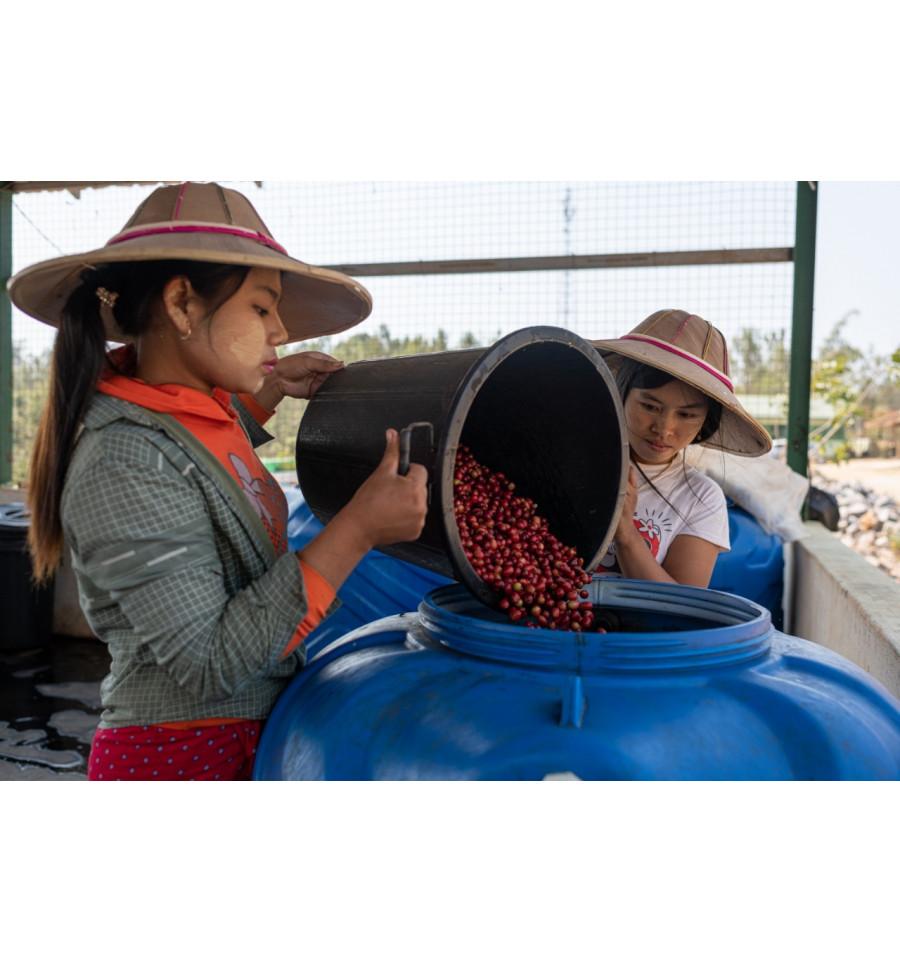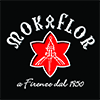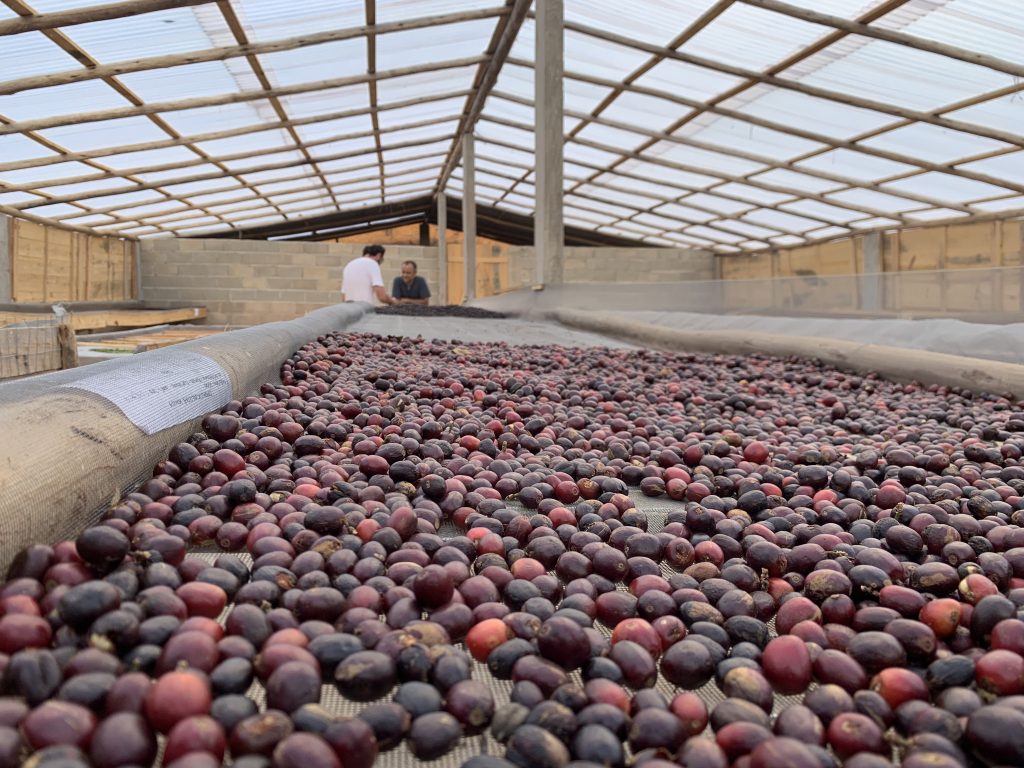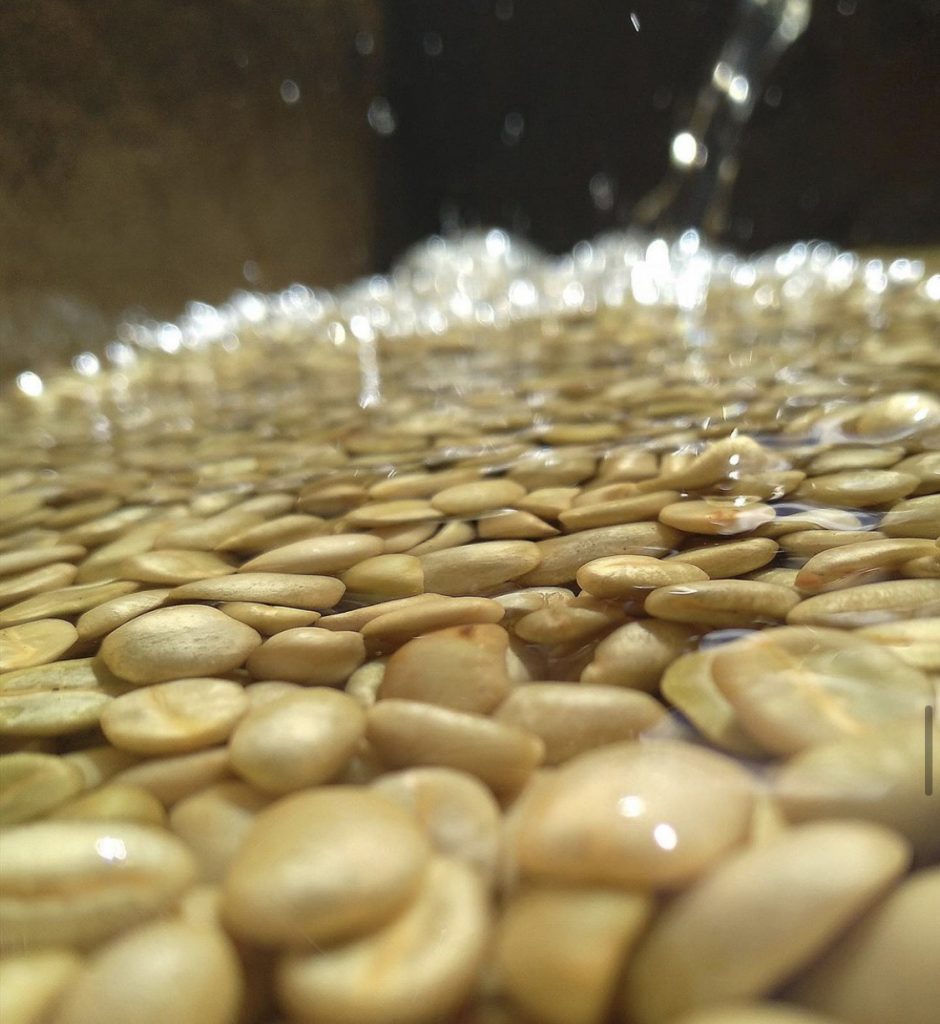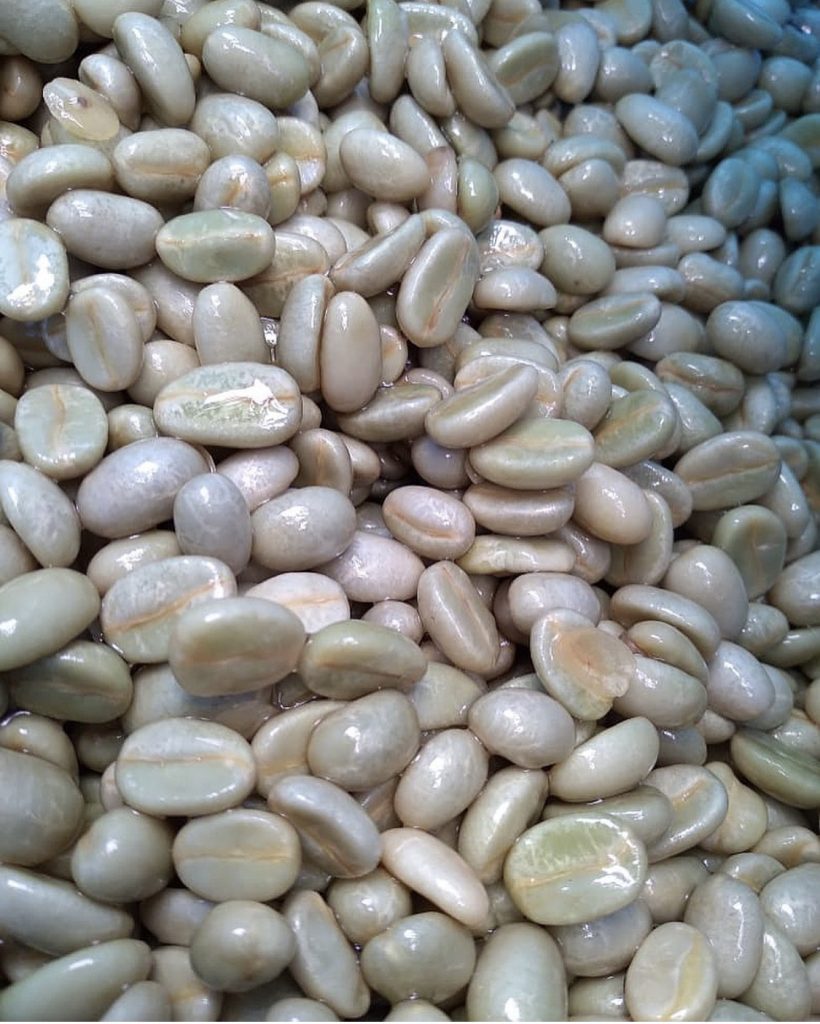Here it is! Finally we will talk about the different processing methods, their importance in the lifecycle of coffee and how they can influence both positively and negatively the final result of our coffee’s quality, aromas and taste. Let’s find out more about the most used ones and also some experimental, most recent coffee processing methods in this article.
The main goal of coffee processing, which comes directly after the coffee picking, is for the farmer to separate the coffee beans from their cherries or so called PULP, before stocking, while preserving their quality.
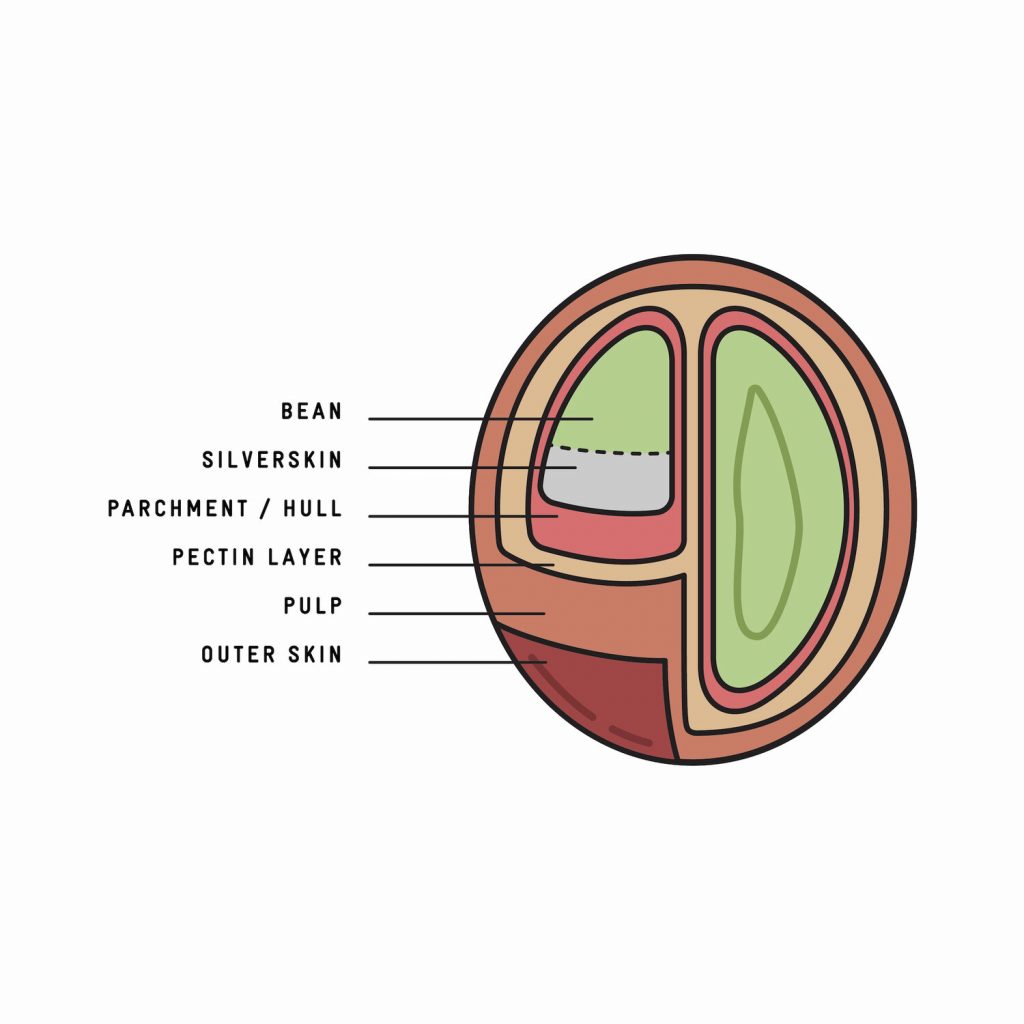
It can influence the taste and enhance certain qualities of the coffee depending on which one we choose. On the other hand, if processed incorrectly it could also lead to defects in the coffee. This is why this step is very important for the raw coffee beans.
Let’s have a look at the three most frequently used processing methods in coffee:
WET or WASHED METHOD
The wet or washed processing method is one of the most frequently used, especially for coffees grown at higher altitudes. It usually leaves the coffee with a higher, clean acidity and fruity notes.
In the washed process, the bean is first separated from its cherry through a de-pulping machine or “despulpadora”. The beans are then put into water tanks where the remaining pulp will be separated through fermentation.
This fermentation is very important and needs to be well controlled. Depending on the weather it will take more or less time (varying from 24 to 72 hours): hotter temperatures will need less time and viceversa. If the beans are left to ferment for too long, this will result in a negative effect on the coffee.
The coffee beans are then washed again to remove any leftover pulp and be laid onto patios or sun drying beds where the humidity of the beans will need to go down to between 12% and 10% (sometimes drying machines are also used to speed up the process).
This process is one of the preferred for specialty coffees as it is said to leave the “cleanest” and most acidic notes in the cup. On the other hand, the water consumption for this method is very high and expensive for the farmers.
This method can be used in all sorts of climates. Papa New Guinea, Kenya, Costa Rica, Java, Guatemala and Colombia are some of the countries in which this method is most used, but others do too. It really depends on the farmer’s choice and availability as well as on the climate.
Our Mokaflor Bernini Black Blend for example, is made of 4 different coffee varieties: 3 of them are Washed (Honduras, Santo Domingo, Costarica) and 1 is a Natural (Brazil).
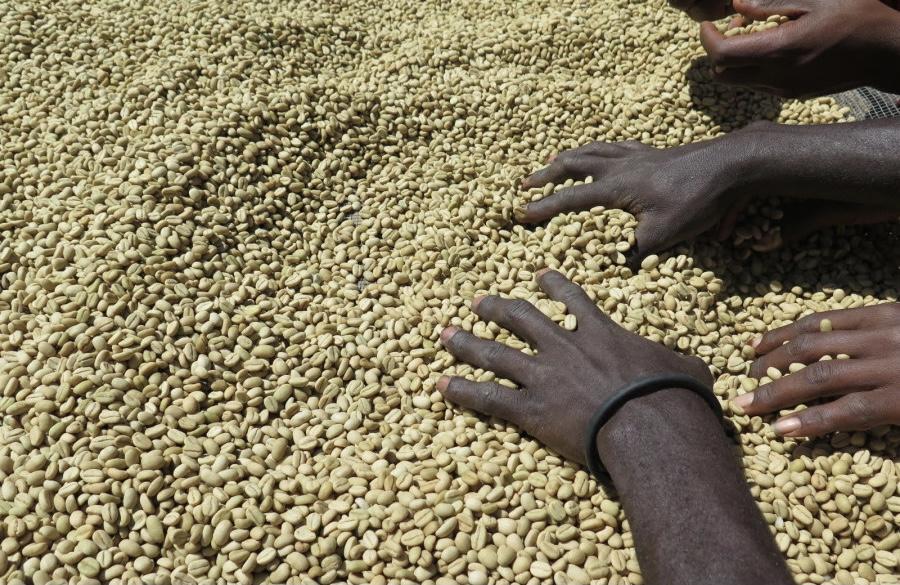
DRY or NATURAL METHOD
This is probably the first and oldest coffee processing methods developed in Ethiopia. After being picked and sorted (removing any rest soil or twigs) by hand or with a sieve or sometimes even with a water / washing channel, the ripe coffee cherries are laid on patios or raised sun-drying beds where they sometimes lie for up to four weeks. In this time, the cherries have to be continuously turned for a homogeneous drying.
Leaving the cherries to dry in the sun, gives the beans a smooth, complex and sweet taste. Also, the sugars from the drying cherries transmit more soluble solids to the bean giving it a more complex and full bodied taste.
This method is used in certain areas that have longer periods of sun and dry weather such as certain areas of Brazil, Ethiopia, Yemen, Mexico, Sumatra, Nicaragua just to name a few.
Our Mokaflor Blue Blend is made of all naturals from Brazil, Ethiopia and India.
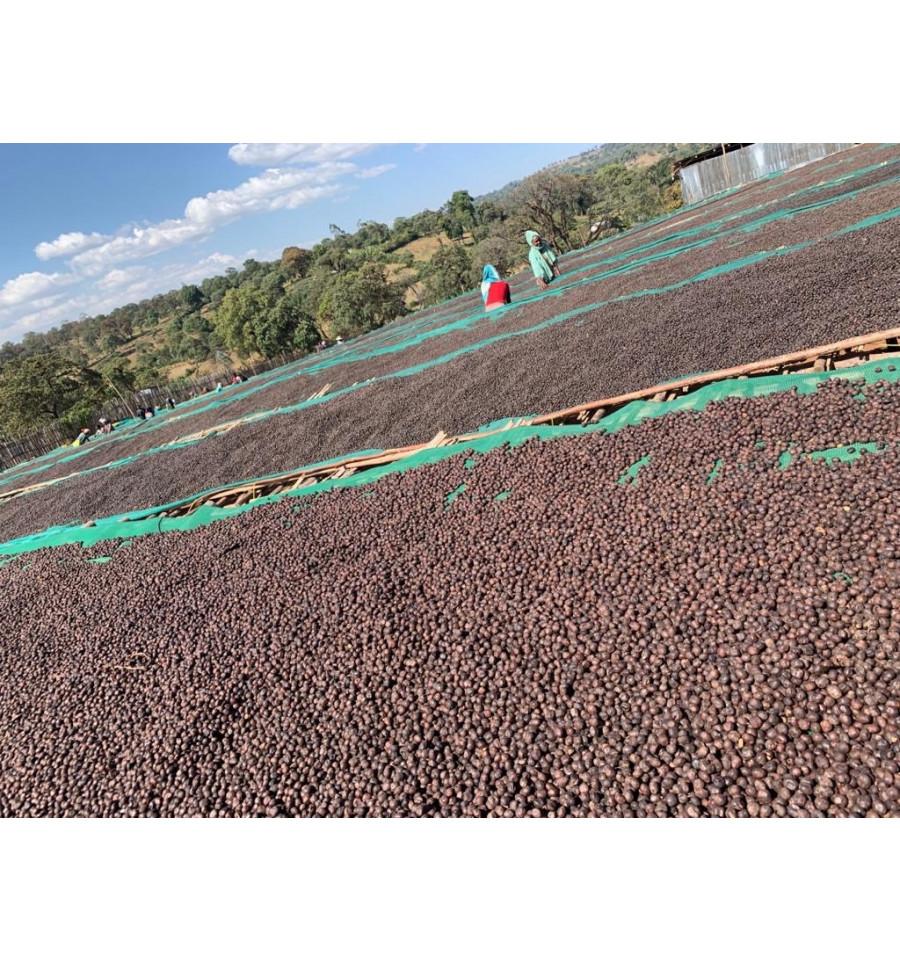
on raised sun beds in Ethiopia
PULPED NATURAL or HONEY METHOD
This method is sort of a combination of the first two. In this case the ripe beans are picked and directly de-pulped, leaving a thin layer on the beans which is in between the full cherry and the de-pulped wet process.
In this case, there is a lower risk of over fermentation (compared to the natural process) but the coffee beans will still receive some of the sweetness and body through the sugars of the pulp.
The honey process can therefore transmit the coffee beans the sweetness of the natural- and brightness of the washed method. This very delicate processing method is usually carried out in hot but dry temperatures, such as some areas of Brazil for example.
In this method we often talk about colors (black, red, yellow and white honey) depending on the amount of pulp which is left on the beans. Black has the most pulp left on the bean (almost like a natural, see photo below) and white the least (as for the washed).
Discover our Specialty coffee from Brazil of the Caffèlab line with delicious notes of caramel, chocolate and hazelnut biscuits. The round body is combined with exceptional sweetness and a pleasant and well balanced acidity.
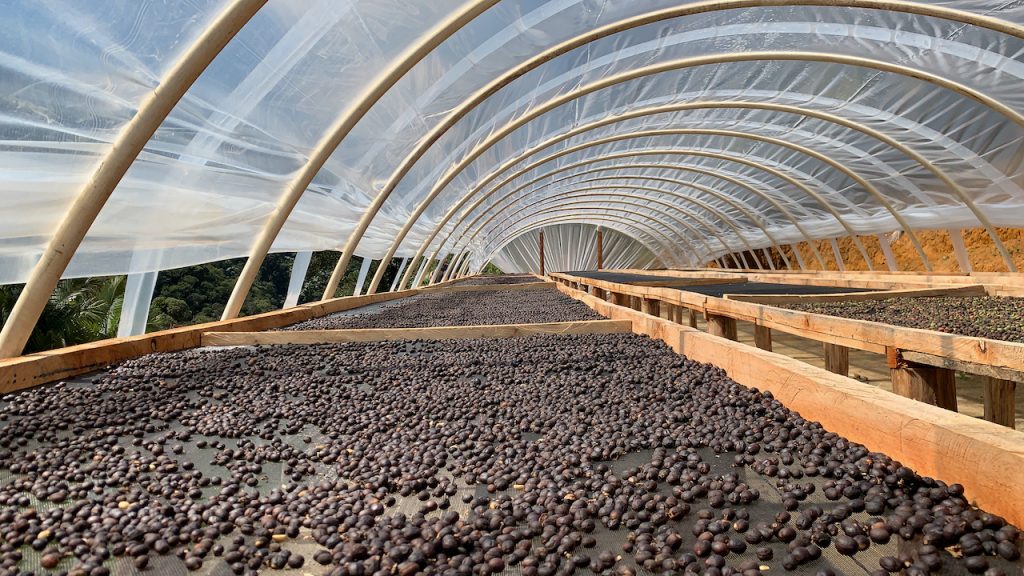
OTHER PROCESSING METHODS
In recent years, new and more experimental processing methods have been developed which have also seen a great growth in the areas of fermentation. The ones which are most in trend and which we have tried and have in our assortment are indicated here below.
SEMI WASHED or HULLED (or the “Giling Basah” in Indonesian)
This unique method is found mainly in Indonesia (Sumatra) and is considered to have very unique characteristics of rustic, earthy and sweet chocolate aromas.
Once the coffee cherries have been picked, the parchment (fruit) is removed as fast as possible through the miller. The layer of mucilage will then be washed off from the beans and the beans will be laid to dry for only a few hours approximately until they reach around 30% of moisture. After this, they will go through a hulling process which removes the final parchment layer.
More drying finally takes place on a drying patio or sun raised beds.
Try our full bodied Sumatra Queen Ketiara with notes of spices and aromatic herbs.
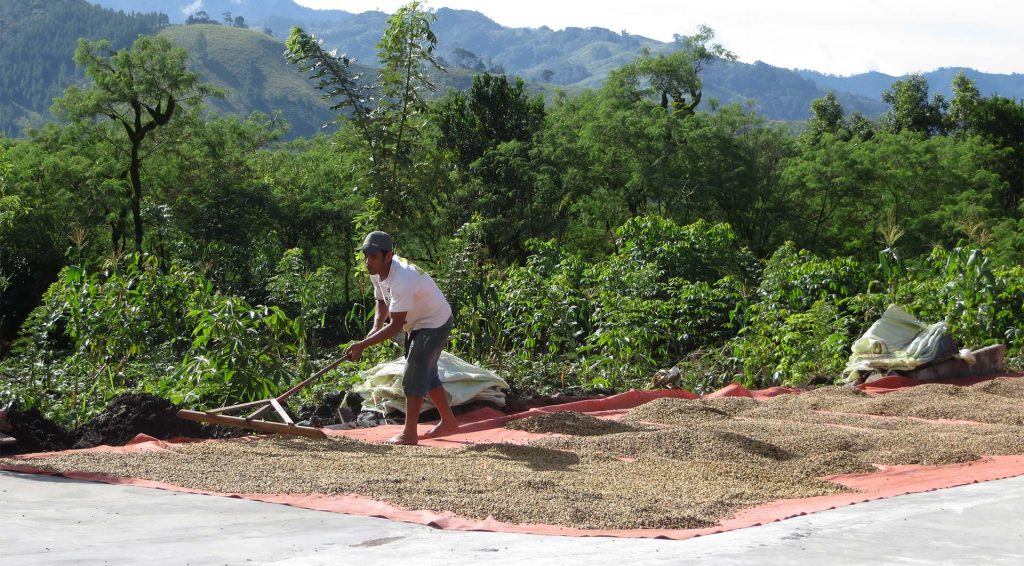
ANAEROBIC
This experimental and quite new method is very popular and trendy amongst specialty coffee growers and lovers. The anaerobic (which means “without oxygen”) fermentation method is basically the same process as the washed but in this case the beans are left to ferment in water tanks that get deprived of oxygen. This method is known to give the beans very unique and complex flavours.
Try one of the latest additions to our Caffèlab Specialty coffee line, the Perù Oconal. This coffee is grown with the agricultural principles of permaculture (find out more about this topic in this article) and then undergoes the anaerobic fermentation method. Try its exceptional aftertaste of berries, cane sugar and raisins.
CARBONIC MACERATION
This method which was taken from the world of wine making, leaves the whole cherries to ripen in water tanks without oxygen, instead of de-pulping them like in the anaerobic process.
Try our newest Specialty Coffee from Myanmar. A coffee grown by 51 women which is processed with the carbonic maceration method and left to rest for 48 hours in fermentation tanks. In the cup you’ll find hints of citrus and sweet dried fruit reminiscent of nougat. The acidity is well balanced by sweetness and good body.
